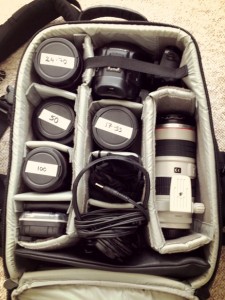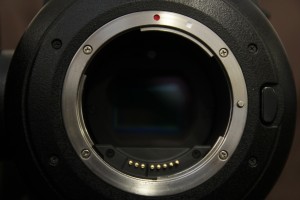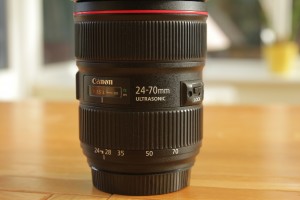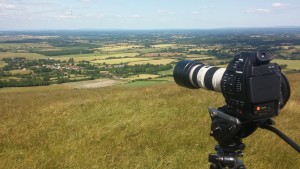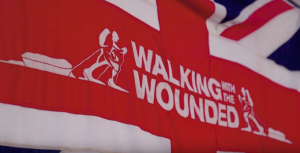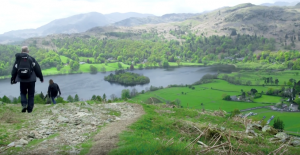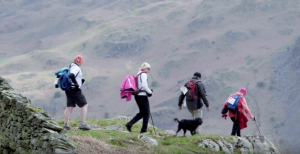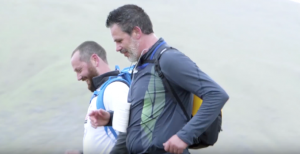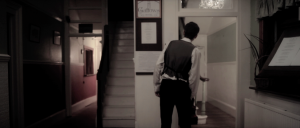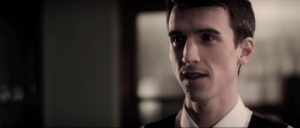Following on from my earlier article about how to choose the right camera for the job it made sense to follow up with one on how to choose the right lens, a major factor that will help you with your choice of camera. The two go hand in hand and your decision on which camera to choose could actually be dependent on the lenses you plan to use.
My stance on choosing lenses is very much the same as cameras:
No lens is perfect. But, for each job there is a perfect lens (or lenses).
Even then, it is subjective.
You see, just like cameras, lenses have their own quirks and variants that make them ideal in certain situations and a nightmare in others. It would be easy to assume that cost alone would be the main consideration but just spending more on a piece of glass doesn’t necessarily make it perfect for your project.
Consider your situation. Do you have a short term brief to meet or a long term investment to consider? If you are stuck choosing a lens for your camera, here are some factors to consider before your investment becomes a money losing opportunity:
Price
First and foremost. What’s your budget? Typically, lenses become more expensive the better they are in low light, the less they breathe when focusing and the sharper they are. Image stabilization, build quality and brand can also affect the cost of the glass considerably.
Return on investment
Are you shooting a one off job or a series of projects? Knowing exactly what you need, rather than what you would like will narrow your choice down and then it’s a matter of working out how likely you would be able to make a return on your investment with the options left to you. Is a £3K cine prime really your best choice to buy when you mostly shoot talking heads? On the contrary, is spending a little bit more going to mean that your lens will outlive your next 2 cameras?
This is a big one. Different lens mounts have varying choices that go along with them and this will of course affect your choice of camera. Here are just some of the options available to you:
EF (Canon) – Popular mount choice for Canon cameras and some third party cameras such as the Black Magic Production Camera.
F – (Nikon) – Another popular choice of mount with a huge range of lenses available to choose from and numerous adapters to adapt them for other systems.
A & E (Sony) – Both A and E mount lenses are rising in popularity due to the likes of Sony cameras such as the A7S and FS7, although some would argue that there is less choice here than some of the other mounts.
PL (Arri) – Geared towards cinema, originally designed for 16mm and 35mm film cameras. Extremely high quality but out of reach for most who are looking to buy.
Angle of view and crop factor
There are countless combinations available to you when it comes to choosing lenses and cameras so it’s important to understand field of view and crop factor before you accidentally make the wrong purchase.
Crop factor refers to how much a lens magnifies the image when a camera’s sensor is smaller than a full frame sensor or an equivalent 35mm film camera. Most lenses are designed using full frame as a reference, however it’s the sensor size that determines what your actual angle of view would be.
For example, a 24mm lens on a Canon 5D, which has a full frame sensor, will give us an angle of view equivalent to 24mm (73.7 degrees to be exact). However, on a smaller sensor camera such as the Canon 600D (APS-C sensor) there is a crop factor of 1.6 meaning 24mm is magnified by 1.6. Our 24mm now gives an angle of view equivalent to about 38mm on a full frame sensor (or 51.9 degrees). This is quite a jump when you think about it, so making sure you know what angle of view you need before you decide is crucial.
Crop factors can be a disadvantage when you need wide angles, such as in this example, but on longer lenses they can give you much greater range which could work for you. It’s also good to know that there are lenses designed specifically for crop sensor cameras, so wide angles aren’t limited to full frame users alone.
To learn more about crop factor check out this excellent field of view calculator from Abelcine.
Type of production
What do you currently shoot or plan to shoot? This will determine which lenses will fit your needs best. Consider the following:
- What size screen your project will show on – any optical imperfections will naturally be magnified in a cinema
- Sharpness required – you’ll get more sharpness for your money when choosing primes over zooms
- The size of the camera crew – do you have someone to help you change lenses safely?
- Project turnaround – do you have time to change lenses for every shot?
- The location & portability – do you like to travel light?
- If you need to zoom – how unpredictable is your subject or location?
- Your lighting conditions – are you shooting a lot in low light?
- Screw in filters or mattebox – what kind of ND, polarisers and other filters will you be using?
- The grip you have available – will you always have a rig or is image stabilization essential?
- Follow focus – to attach or not and if so, how?
- Aesthetics & personal preferences – is beautiful bokeh (background blur) or minimal distortion a priority? What about the way a particular lens handles contrast and saturation?
With answers to these questions you should get a clearer idea of whether you need primes, zooms or perhaps a bit of both.
Examples
As you can see there is a lot to consider when making a lens choice. In fact, you may just be a little more stuck than you were before. However, have no fear as here are a couple of practical examples of lens/camera combinations I’ve used and the pros and cons of these choices.
Walking with the Wounded: Cumbrian Challenge
The brief: 3 minute highlights video of fundraising event. Positive and engaging.
Location: The Lake district
Camera: Canon C100 with Canon 24-70mm f2.8 L & Canon 70-200 f2.8 IS L
The C100 has a crop factor of 1.3 so my 24mm became a 31.2mm and my 200mm became a whopping 260mm. Being in the great outdoors having zooms covering this range was excellent and being able to get shots of the walkers from a great distance was essential. The widest angle was still wide enough to get establishing shots; anything much wider probably would have weighed me down unnecessarily.
In fact, talking of weight, the telephoto lens was a beast. As it opened up to f2.8 it was quite heavy but being in the great outdoors during the day meant that I never needed this extra stop of light. In this case, the 70-200 f4 IS would have been more suitable as it is smaller and lighter (as well as cheaper). Image stabilization for me was a must on the telephoto though as it wasn’t always easy to use a tripod and it was quite windy up on that mountain.
Other suitable lenses:
Canon 24-105 f4 IS L – This would have given my 24-70 greater range and image stabilization at the expense of 1 stop of light and some sharpness.
Canon 28-135 f3.5-5.6 IS – If I only wanted to take one lens this may have been the best option. Incredible range and image stabilization at the expense of aperture and sharpness.
Noose
Brief: Short horror film. Moody and suspenseful.
Location: Hotel interior
Camera: Canon 5D mkii with Zeiss ZF primes and EF adapter
A short film I did a few years ago. Full frame was the choice for this project because low light ability, shallow depth of field and a wide angle of view were essential to getting a cinematic look whilst showing the space within the rooms. The Zeiss set hired included an 18, 25, 35, 50, 85 and 100mm so were a fantastic range for drama and being primes, were very good in low light. What’s more, their sharpness and very aesthetically pleasing bokeh (background blur) made them an exceptional choice for the project.
On the flip side changing lenses slowed us down on what was already an incredibly tight schedule plus there were no focus gears on the lenses themselves (we had some complicated camera moves) so we had to apply and reapply focus rings quite often. What’s more, being Nikon mount we had to also attach and reattach EF adapters which once again, slowed us down. Of course, we could have chosen to use a zoom lens to speed things up but our maximum aperture would have been lower and there would be a greater chance of distortion in the corners of the image.
At the end of the day image quality really mattered here and by looking at the stills you can see why I would choose Zeiss primes again in a heartbeat.
Other suitable lenses:
Canon EF cine primes – Incredibly sharp and optimized for cinema with manual iris, focus rings and no ‘breathing’ when focusing, these lenses would have been an excellent choice. The EF mount would have made them quick to change too, however, all of this would have come at a much higher price.
Canon L series primes – These would be around the same price to hire as the Zeiss but with the Canon mount for convenience. No focus rings again and aesthetics that are in my opinion not as pleasing (this is just personal preference) but they are certainly a good economical choice, especially for sharpness.
These are just a few examples to get you thinking and of course these are just my own opinions, but as you can see it’s a bit of a minefield out there. There are so many factors to consider and what one person needs in their lenses may be unnecessary for another so ultimately it’s down to you to decide what your priority is. It also doesn’t help that new lenses are being introduced regularly, although fortunately nowhere near as much as new cameras are.
One thing to remember though is that old lenses aren’t necessarily bad lenses! If they are free of mould and scratches and the like, they could be perfectly usable. In fact, newer lenses with electronically controlled apertures (Canon are particularly guilty here) limit your choice of format unless you’re prepared to buy expensive powered adapters such as Metabones. However, older manual lenses such as the Nikon M42 variety can be used on many modern cameras (with adapters if necessary) usually at a much lower cost but sometimes rivaling the quality in areas. In fact many vintage lenses have characteristics that make them rare and unique (this deserves an article in itself) hence their appeal to collectors and photography lovers.
At the end of the day do your research and only get what you need. By concentrating on producing high quality work and making sensible choices you’ll realise it’s not just about the camera or the lens, but the person behind it.


